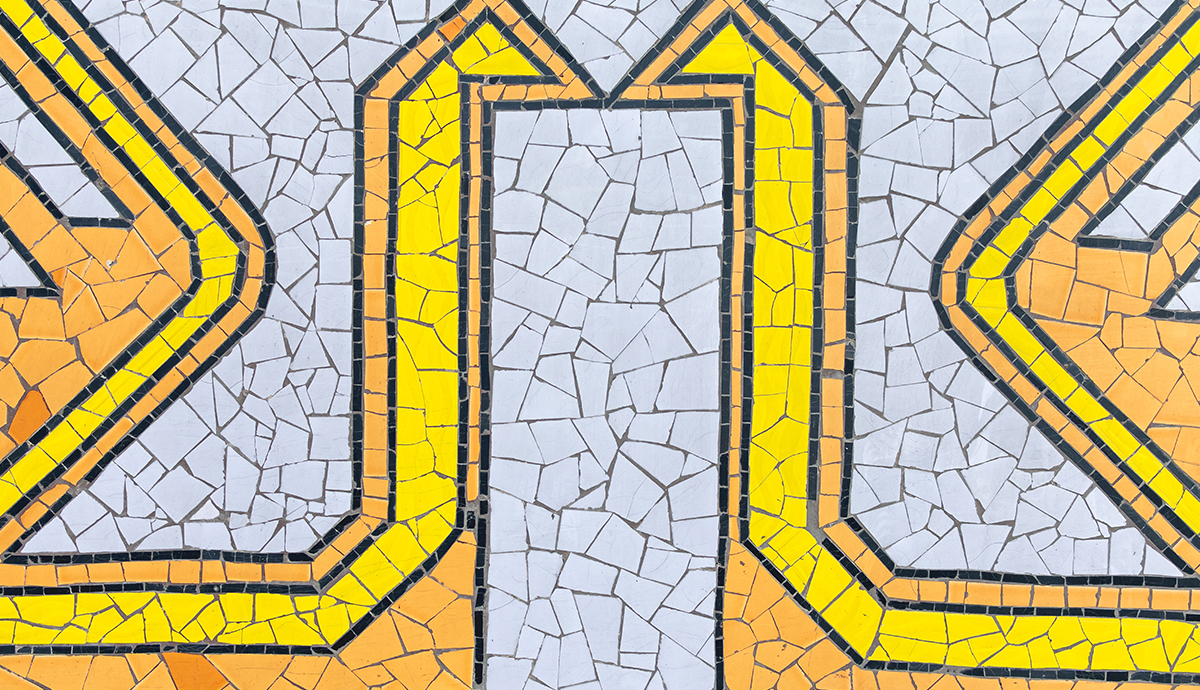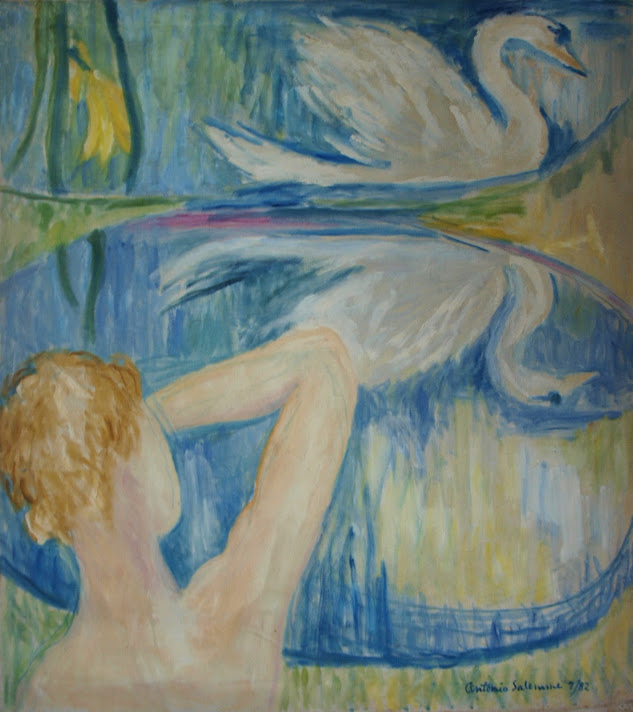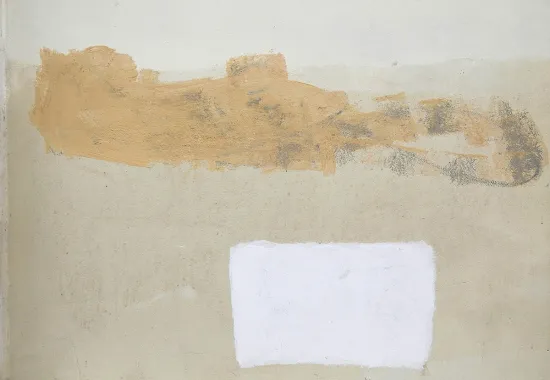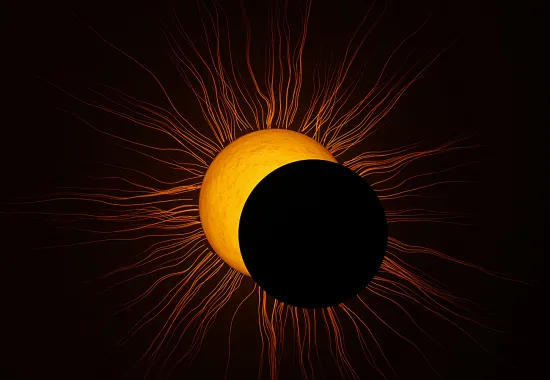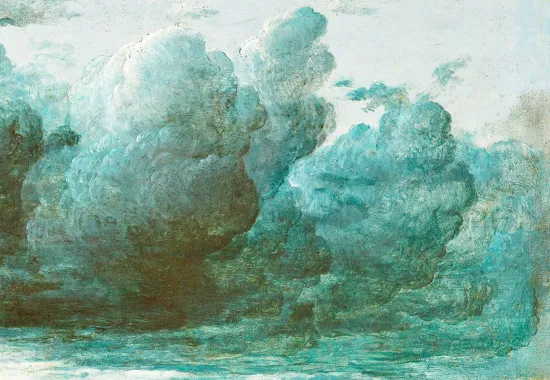The Artist's Vision
Recently, I heard the results of The Fifth Annual James Hearst Poetry Prize sponsored by the North American Review (573 Entrants 2,583 Poems). I was a finalist with one poem, which is below. I did not think the judge Billy Collins was going to pick my poem as the winner, to be perfectly honest, because the poem I sent wasn't really up his alley, so to speak. I was glad to make the finalist group though because that means they will publish this poem. I have always liked this poem despite the fact that it is "difficult."
I'm going to do an unusual thing and actually say how this poem was created. It began like, jesuschrist (!) more than twenty years ago. Yeah, it was 1984, and I was staying at a friend's house due to being somewhat temporarily destitute (okay, okay, I was homeless for a while after I was a literally starving artist in a real third-floor garret with bullet holes in the windows, blah blah blah. It may sound romantic, but it really was mostly ugly and nasty. Stuff that makes you prone to anti-social habits and rots your teeth, etc.)
So, anyway, this poet friend was best friends with this incredibly talented genius painter William DeRaymond, and he was the protegé of the once world famous painter-sculptor Antonio Salemme, whose works were just sitting around the house. I at first did not appreciate what Salemme was doing as a painter. Bill, the protegé, had to teach me how to see what his paintings were doing. It took quite a while before Bill was able to make me just look and look and look at the painting. He just kept asking, "Can't you see what it is?"
It was figurative but not in a realist way. You could see a swan drifting by on the smooth water and a man from behind, just the top part of his torso, head and an arm flung up in a gesture of heart-rending rapture. He was obviously struck by the beauty of the swan, and it was obviously unconcerned with him in its radiant beauty. Suddenly the situation of the painting became somehow alive and dramatic as the knowledge and wisdom of the insight became clear to me. I felt as though I were suddenly pulled out of myself into this vision as I understood how it was all at once tragic, inevitable, and beautiful that the man/artist/seer cannot fail to love and desire the unattainable.
It reminded me of a line from Speech and Phenomenon by Derrida that went something like, "in spite of what our desire cannot fail to be tempted into believing, the thing itself always escapes." There was something tragic about Derrida's vision also, but Salemme's vision was much greater as he was not merely stating a position within the limits of human desire. Somehow, due to the style of the presentation of the painting, he let the viewer of the painting identify with the man who desires and at the same time comprehend his situation, as it were, from a perspective of the greater totality of the universe, which did not diminish the emotion. This other aspect made it more intense as one became both the artist as entrapped/engaged in desire and also the far-seeing, more ethereal self, something like the compassionate over-soul.
Perhaps Salemme in his own vision and wisdom had fully comprehended and accepted the ultimate irony of love and desire, and due to this complete surrender of self-interest had been able to more completely experience and thus convey the agony of that knowledge.
So in this poem, I was trying to explore and explain the painting in a poetic form so that readers might feel a little of what I felt and be intrigued enough to try to find out about Antonio Salemme. I tried to be very faithful to the painting, although, admittedly, no poetic translation could faithfully render what this painting achieved.
The Swan (after a painting by Antonio Salemme)
shielding his eyes, he half-lifts his arm
a startled wing
floating away like a gasp
because she is crossing his line of sight
a gash in the world sailing from left to right
as if there were nothing else
but his ethereal agony
that isn’t the hunger for love or sex
but an ache like that which draws the eye
to blue jetting flames from orange coals
or ox-eye daisies in the field
bellis perennis wanting nothing
and she—she is caught in the eye like snow
but it is the eye that melts—
he can’t un-see her figure in the flow
or separate himself from her
mirrored image of an S curve
her neck and breast a cool impasto
a pure fire on the aquamarine
poised to edge out of sight
and he can’t help feeling she is
a time that was
when sunlight licked the fog away
and he was the naked air still steaming
a morning song spilling urgently
a sound-fountain from his lips
a gale-force bearing seeds to new births
or just concrete-paved earth
because he couldn’t—and can’t—revoke this love
because what never is is heaven to him
and she—she sees through her own image, a swan—
but she knows he can’t.
The painting changed my feelings, my consciousness about life and art forever. And every other painting by Salemme that I saw had this same kind of transformative power. It was art that enacted a kind of zen koan. It was that powerful, like a moment of enlightenment. But it was only there if you were ready for it. I have never in my life seen painting that was anywhere near Salemme's in vision and power; it had a kind of higher wisdom that took you far beyond yourself. Seeing his work changed the way I saw everything. He was so much more evolved as a seer that once you saw what he was doing, it was irrevocable.
Then I understood Bill's zealousness and his frustration. For once you know how powerful a truly great painting can be, you feel very upset with the shallow, the philistine, the flashy, and the trashy. Bill used to say angrily, "Painting is not muzak for your walls!"
Thanks to Bill, I actually got to meet Antonio once in 1984 and saw some things he was working on in his studio. He was over ninety even then (he was a contemporary with Picasso), but he was still vibrant and actively painting great new things. (He looked more like a very healthy sixty-year-old.) He was best known for his nude statue of Paul Robeson in alabaster, which won the Prix de Rome in the 1930s. Antonio was, and still is, the greatest painter I have ever seen.
Now that I am older, I understand how the greatest art is often completely overlooked. The greatest vision, which can produce the most profound work, is not usually obvious. The viewer has to be sufficiently hungry for the truly great to even be willing to look for it. But that also requires an educated viewer who knows that there is the possibility of a truly great vision in art.
Jeffrey Ethan Lee's first full-length poetry book, invisible sister was published by Many Mountains Moving Press, 2004. His second book, identity papers, was a finalist for the Colorado Book Award. Lee has a Ph.D. in British Romanticism and an MFA from NYU. He is currently teaching at Temple University in Pennsylvania. Lee's poem, "to tear them away" was featured in issue 295.2.
Painting by Antonio Salemme
Recommended
Mercy
Eclipsing
Psychic Numbing


